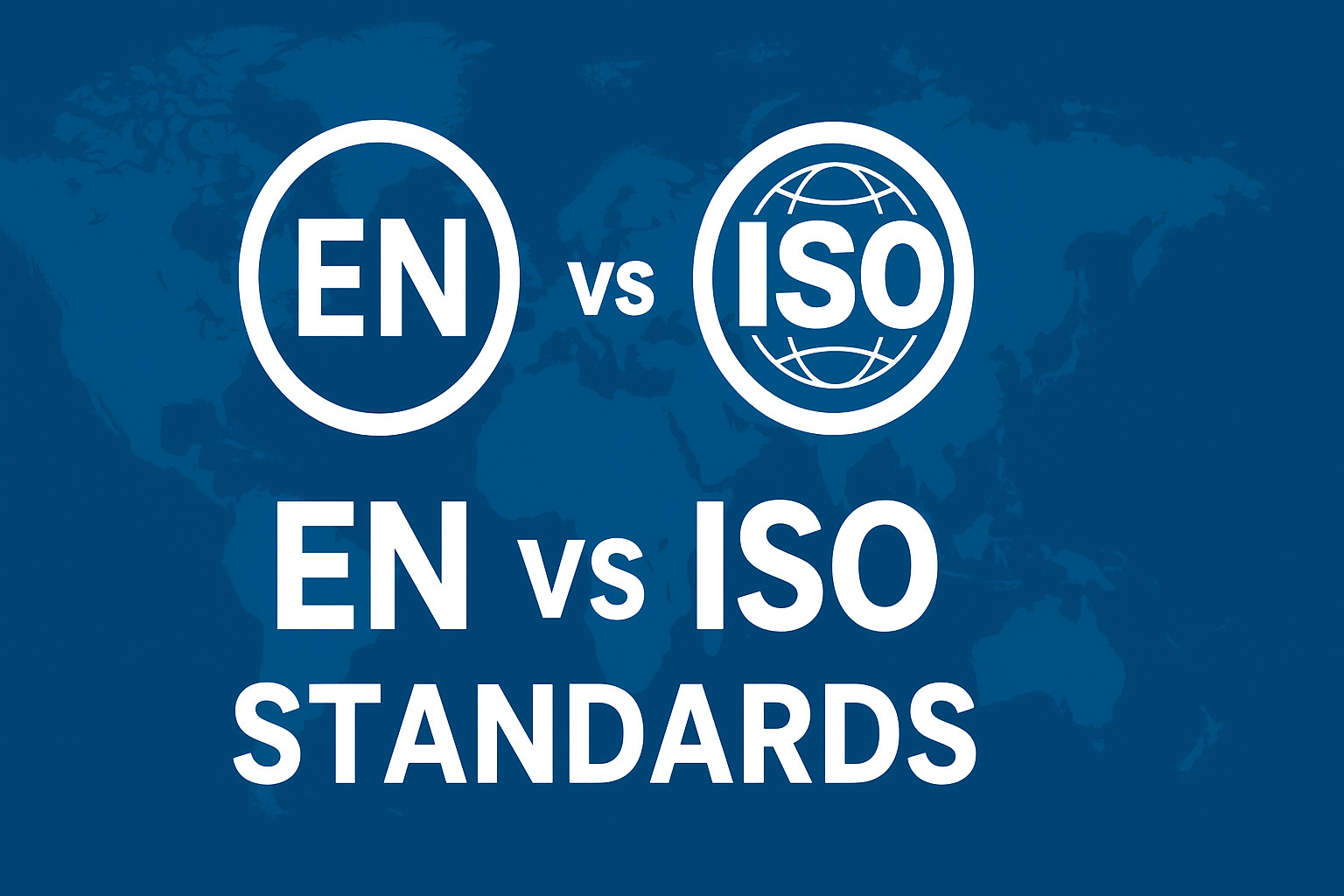Discover the main differences between EN and ISO standards. Learn how they work, why both matter, and how to access official versions on Genorma.com.
What Are EN and ISO Standards?
If you manufacture, import, or distribute products in Europe, you’ve likely seen both EN and ISO standards on documentation.
But what’s the real difference between them — and why are both important for compliance?
In simple terms:
- ISO standards are international — recognized worldwide.
- EN standards are European — adopted specifically for the European Union (EU) and EFTA countries.
Both systems ensure safety, quality, and interoperability, but they serve slightly different purposes within the global regulatory framework.
Understanding ISO Standards
The International Organization for Standardization (ISO) develops standards used across the world to unify industrial, environmental, and safety practices.
Key Facts About ISO Standards
- Created and published by ISO, an independent international body.
- Aim to harmonize technical specifications globally.
- Cover almost every sector: manufacturing, healthcare, energy, IT, and more.
- Examples:
- ISO 9001 – Quality Management Systems
- ISO 14001 – Environmental Management
- ISO 45001 – Occupational Health and Safety
ISO standards help businesses demonstrate that their products or services meet international best practices.
Understanding EN Standards
EN stands for European Norm (Norme Européenne).
These are European standards developed or adopted by European organizations such as CEN, CENELEC, or ETSI.
Key Facts About EN Standards
- Mandatory across EU member states once published as an EN standard.
- Ensure compliance with European directives and regulations (e.g., CE marking).
- Often derived from ISO or IEC standards — but adapted for European law.
- Examples:
- EN 1090 – Structural Steel and Aluminum
- EN 60601 – Medical Electrical Equipment
- EN 71 – Safety of Toys
Once adopted, EN standards replace all conflicting national standards across Europe (for example, BS, DIN, or NF standards).
The Relationship Between EN and ISO Standards
Many standards are jointly developed by ISO and CEN under the Vienna Agreement, allowing for global and European harmonization.
For example:
- EN ISO 9001 means it’s both an ISO and EN standard, recognized worldwide and mandatory in Europe.
- It combines the global methodology of ISO with the legal compliance of EN in the EU.
In other words, “EN ISO” versions ensure you meet both international and European market requirements simultaneously.
EN vs ISO Standards: Main Differences Table
| Feature | EN Standards | ISO Standards |
|---|---|---|
| Scope | European Union and EFTA | Global, international |
| Publisher | CEN, CENELEC, or ETSI | International Organization for Standardization |
| Legal Relevance | Linked to EU directives (mandatory) | Voluntary, unless adopted locally |
| Adoption | Replaces national standards in Europe | Voluntary adoption by countries |
| Examples | EN 71, EN 60601, EN 1090 | ISO 9001, ISO 14001, ISO 45001 |
| Dual Recognition | EN ISO = both European and International | ISO = International only |
When to Use EN vs ISO Standards
- If your business operates only within Europe, follow EN standards to ensure CE marking compliance.
- If your company sells worldwide, use ISO standards as your foundation for global trade.
- For best results, use EN ISO standards, which cover both regulatory regions.
Where to Buy or Download EN and ISO Standards
To ensure legal and technical compliance, always use official and up-to-date standards.
You can easily search, buy, or download EN, ISO, and EN ISO standards from Genorma.com, one of Europe’s most trusted sources for official publications.
Popular examples include:
- EN ISO 9001 – Quality Management Systems
- EN ISO 14001 – Environmental Management
- EN 60601 – Medical Electrical Equipment
- EN 1090 – Structural Steel and Aluminum
Why Understanding the Difference Matters
Choosing between EN and ISO standards can determine:
- Whether your product can be sold in the EU
- Which testing and certification process you must follow
- Your company’s credibility and international recognition
In short, ISO helps you compete globally, while EN ensures your success in Europe.
Manufacturers seeking both advantages should focus on EN ISO standards, the true bridge between global innovation and European regulation.
